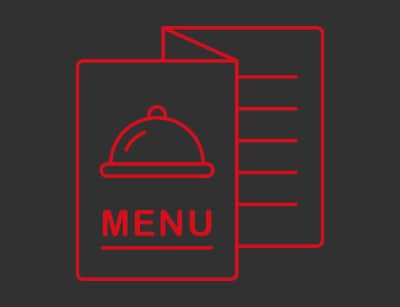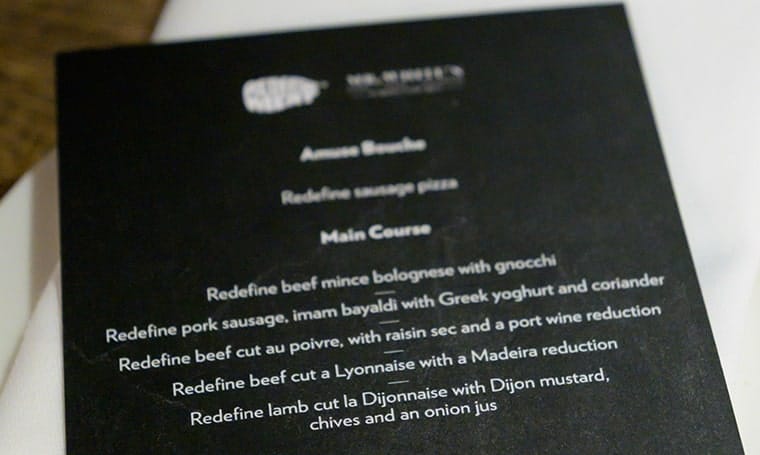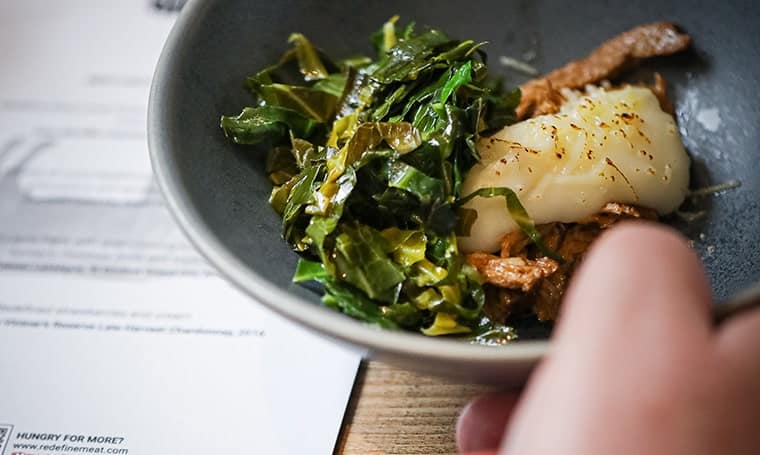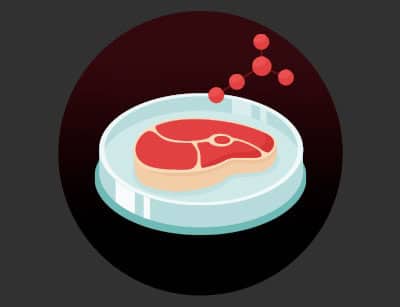
Restaurant Menu Ideas
Menus often dictate diners’ first impressions of a restaurant. They’re available online for previewing, on a stand or window outside of the restaurant itself, or handed to diners as soon as they’re seated. To run a successful restaurant, you cannot underestimate the importance of your menu.
A menu represents much more than just a list of a restaurant’s dishes. It’s a way to craft an experience, push your business strategy, tell a story, communicate with diners, establish your restaurant’s branding, set the tone of the diners’ experience, promote your dishes, encourage diners to return, and so much more. The dishes on your menu are what keep diners coming back for more and help shape your restaurant’s brand.

A restaurant menu should be considered as an evolving piece. The best menus evolve over time, according to the seasons, and according to changing preferences of your clientele. No matter how many dishes on your menu have earned cult status, it will always need refreshing every so often.
Review your menu at least once per quarter. Is it serving the needs of your business? What’s the most popular dish on the menu? What is the most profitable dish on the menu? Is there a dish on the menu that is making you lose money? You can keep the most successful and ditch the least. You can try and push the most successful dishes by highlighting them on the menu, ensuring their descriptions are the most tempting, carefully considering their placement on the page, and more.
Of course, it can be a challenge to constantly update your menu with fresh ideas no matter how experienced you are as a restaurateur or chef. So, whether you’re an aspiring or current restaurateur, we’ve compiled a list of inspiring ways to come up with new restaurant menu ideas to help you along the way.
How to Build a Restaurant Menu
A restaurant menu is more than just a list of dishes. It needs to be tempting, strategic, on brand, and storytelling. Although all menus are different, the best of them share best practices. They are:
- Concise
- Enticing
- Descriptive
- Organized
- Branded
Each dish must therefore be described in a way that is enticing but not too long, and organized into clear sections such as small plates and large plates, or starters, mains, and desserts, or breakfast, lunch, and dinner. The menu should be clearly “decorated” with your restaurant logo and general branding, ensuring that all fonts, design choices and even the menu’s material are consciously on brand.
In the digital era, it also makes sense to include your restaurant’s WiFi password (if you have) and social media handles. That way, you give diners more encouragement to share pictures of your restaurant’s food online – one of the best forms of marketing your restaurant can have.
What are Different Types of Restaurant Menus?
There are numerous types of menus dependent on what your restaurant offers and the experience you want it to create.
It’s important that when choosing what menu type your restaurant will offer, you consider what customers you want to attract and serve.
Some examples of restaurant menu types include:
- Seasonal Menu: changes with the seasons. This could be quarterly for Fall, Winter, Spring and Summer, or more often based on different seasonal produce.
- Static Menu: mostly unchanging and is favored by many chain restaurants.
- Daily/ Weekly Changing Menu: changes either daily or weekly according to the freshest produce available that day/ week and the chef’s ingredients selections.
- Diet-Based Menu: designed for specific diets such as gluten-free, vegetarian, or vegan.
- A La Carte Menu: separates each dish to be ordered individually.
- Fixed Price Menu: bundles dishes together across courses into fixed price menu sets, often categorized according to price per head, or to particular dietary choices (such as vegetarian) and more.
8 Tips for Making a Great Restaurant Menu
-
Be Inspired
Whether you have a pre-existing menu or you’re starting from scratch, it’s always important to be open to inspiration from all corners of the food world. This will allow you to constantly improve your menu based on what the latest industry trends are, popular ingredients, successful strategies, seasonal ingredients, and by keeping up with your competitors.
Social media provides an easy way to follow food trends and gain inspiration. You can follow chefs, other restaurants and restaurateurs, food critics, along with food brands, and food media companies. Instagram and YouTube are great platforms for food inspiration. You can take this one step further by subscribing to dedicated newsletters, online publications, and magazines. Keep an eye on the activities of TV chefs. You can even do your own on-the-ground research by taking inspiration from the restaurants you visit and what local delis are stocking on their shelves.
Travel is also one of the best sources of inspiration. People use ingredients differently throughout the world, and countless different ingredients too, so there’s endless knowledge to gain from seeing how people across the world are making their food taste delicious and what they’re serving up in restaurants.
An innovative and creative menu can be all the difference between a great and seamless guest experience, which is why keeping your eye on the latest food brands is so valuable. Take inspiration from what’s trending, such as sustainable food tech solutions like our very own REDEFINE MEAT™ offerings.

Our versatile New-Meat™, ranging from Redefine Beef Flank to Redefine Premium Burger, will give your guests a delicious, innovative, and memorable experience that will leave them wanting more. Whatever the cuisine or culinary style, New-Meat™ is the ultimate exciting addition to any menu.
-
Update the Restaurant Menu Often
A menu is an evolving document rather than a static list. You should be editing and refining it constantly.
Over time, you’ll begin to establish which dishes on the menu are the least popular and least profitable for your business. These dishes can be cut off the menu or replaced by fresh ideas.
With every dish on your menu, ask yourself a few questions: is there anything else like it on the menu? Is it profitable? Will customers be upset if it’s no longer available? Does it fit your restaurant’s style?
You can use what you learnt in your gathering inspiration stage to update and refine your menu. Perhaps there’s a revolutionary new food brand that’s taking the world by storm and you want to get in on the action by putting it on your menu. It’s a sure-fire way to keep your menu current.
Updating the restaurant menu with seasonal ingredients is also essential. Using seasonal ingredients helps to create an authentic and exciting experience for your customers. The versatility of New-Meat™ allows chefs to combine fresh ingredients and capture the delicious flavors of each season.
-
Establish a Menu Theme
This means that you can get creative with design, typography, titles, and descriptions. Maybe you want all of the dish titles to be whacky and amusing or maybe you want to make pop-culture references, for example. Use the menu theme to make your restaurant standout from your competitors.
The best way to create your menu around a theme is to hone in on your niche. How do you establish your niche? Think about your restaurant’s offerings compared to your competitors. What do you offer that they don’t? Or what do you do significantly better? What does your restaurant represent? Does it represent nostalgic home cooking, sophisticated Michelin star experiences or romantic bites with a creative flair? Is your restaurant child friendly or adults only? Do you offer sharing plates or individual portions?
Those are all questions you can ask yourself when trying to identify your niche and aligning menu themes.
-
Use Design to Highlight Your Most Popular and Profitable Dishes
A menu is your chance to highlight your most popular and profitable dishes to encourage more diners’ to order them. You can do this through design, although it should never compromise the overall aesthetic of the menu. It must work with the overall design so that things stay neat and clear.
A design tip is to use the notorious golden triangle: this theory suggests that when people look at a page, they start in the center before moving to the top right and then to the top left in the shape of a triangle. So, taking this into account would mean placing your most important menu items either at the center of the menu or the very top in an attempt to encourage diners to see them first.

-
Keep the Restaurant Menu on Brand
Your restaurant’s branding should be consistent throughout all of your designed elements and interior decor. So, your menu, logo, website, social media, restaurant sign, business cards, and more should all correlate on a design and thematic level. Color schemes are important to keep aligned, as are fonts, tone of voice, and broader themes.
A fine dining restaurant should have more sophisticated and formal language on its menu than a fast-food joint, for example.
The consistency of your branding will help customers recognize your brand wherever they see anything related to it. This will ultimately help keep it front of mind when they are deciding where to eat.

-
Reconsider the Use of Photos
How many times have you been at a restaurant that has photos of the food on the menu and judged it negatively? It’s a controversial debate. Online menus tend to favor food photography to boost orders. However, in printed menus, customers may associate photos with “cheap” places.
There is a case to be made for the effectiveness of photos on menus as a way of helping customers visualize the dishes – but as a general rule, it is not considered a sophisticated practice.
-
Be Seasonal
Although every menu has its core offering and classic dishes, restaurants can benefit from embracing seasonality on their menus. It might be that you add entirely new seasonal dishes to your menu, or that you play on your classics using seasonal ingredients. Either way, adding some wild garlic to your menu in Spring (for example) can go a long way in improving your restaurant menu.
-
Tell a Story
A restaurant menu provides a great opportunity for telling your restaurant’s story. You can either include a page at the beginning with a short story including a brief rundown of your history, founders, and building, or you can include snippets of information throughout the menu if you want it to have a more conversational style. Placing little text boxes of fun facts throughout the menu can give it a playful and friendly feel.
By telling your story, customers will connect with your restaurant better. Consequently, they’re more likely to remember your restaurant and return time and again.
Restaurant Menu Ideas
Here is some more inspiration for restaurant menu ideas.
Spring Restaurant Menu Ideas
When we think of spring food, we think of:
- Artichokes
- Sweet peas
- Zucchinis
- Arugula
- Spinach
- Rhubarb
- Cherries
- Strawberries
- Asparagus
- Wild garlic
- New potatoes
- Radishes
- Lamb
- Salmon
Spring is a bountiful time when it comes to produce. The weather is warming up, the sun is shining, and fresh herbs are flourishing. Not only do the spring greens flourish, so too do us humans – who are given a new lease of life and more interested in getting out of the house and eating out. Spring is a time to refresh and reset for everyone. Take advantage of people’s positive spirits by making your menu irresistible.
The Seasonal Food Guide is a great resource for Americans looking to discover what’s in season when and how to identify the freshest produce. This can be an ideal starting point for figuring out what to put on your menu for spring. It’s also advisable to speak to your providers and find out what they recommend. They’ll know what their best offerings are, after all. If you have good produce as your starting point, you really can achieve anything with food.
Incorporating seasonal spring vegetables into salads is a wonderful addition to any menu because as the weather lightens up, so too do people’s appetites. People often want fresher, lighter meals in spring as they veer away from the hearty, warming food of Winter. Creating salads around asparagus, zucchinis, and sweet peas are often crowd pleasers. So is adding a medley of spring vegetables to a rice dish like risotto or paella.
Summer Restaurant Menu Ideas
Things get hot and sweaty in the summer. With this amplified heat comes lighter appetites. It’s important to consider not only seasonal produce when updating your restaurant’s menu for summer (think tomatoes, watermelon, corn, nectarines, and fennel), but also seasonal eating habits.
For example, you wouldn’t put a steaming hot tomato soup on your summer menu, but you could put a zingy gazpacho on there. They may both be soups with the same base ingredient, but gazpacho is much more refreshing for a sweaty summer’s day, right?
Mixing summer fruits with leafy greens and light cheeses such as mozzarella or feta is always a winning summer menu combination. It’s vibrant, light, and complementary. Bringing zesty and acidic notes onto your menu is a delicious summer addition.

Fall Restaurant Menu Ideas
As we move from summer into fall, the temperature is cooling down and the food is heating up. It’s time to move on from crisp summer salads and think of creative ways to serve hot veggies with maximum flavor. You can’t go wrong when roasting vegetables with a maximum flavor seasoning blend of garlic, salt and herbs or spices.
Rosemary and sage are great herbs to incorporate into your fall restaurant menu, alongside fall vegetables such as brussels sprouts, cauliflower, mushrooms, parsnips, pumpkin, and squash.
Winter Restaurant Menu Ideas
When we think of winter food, we think of:
- Bananas
- Carrots
- Leeks
- Onions
- Turnips
- Potatoes
- Oranges
- Apples
- Cabbage
- Celery
- Kale
The key to a successful winter restaurant menu is, like with summer, focussing on seasonal eating habits as much as seasonal ingredients. Often the two go hand in hand, because a lot of winter vegetables are at their best when slow cooked or roasted and served hot. They are also often high in starch, which makes them filling – and winter definitely requires our bodies to fill up more.
People tend to crave warm and hearty dishes in winter, like soups, broths, curries, slow cooked stews, roasted vegetables, and roasted meats. Luckily, delicious winter produce like leeks, onions, carrots, potatoes, and kale lend themselves perfectly to these cooking methods.

Simple Restaurant Menu Ideas
Simple restaurant menu designs allow you to change up the dishes as often as you like without messing with the overall aesthetic. It also lays things out clearly for your customers so that they can see their options without being overwhelmed. Here are a few tips and tricks for simple restaurant menu ideas that can benefit your business:
- Use simple shaped outlines around particular dishes that you wish to draw your customers’ attention to, such as your most profitable dishes or famous dishes.
- Use different colored text where you want to highlight certain things, e.g. if all of the mains come with a choice of fries or rice, you can include this information at the top of the section with a different colored font as opposed to writing it next to every dish. That keeps things streamlined and avoids overwhelming diners.
- Remember that categorizing your menu according to starters, mains and desserts isn’t always the simplest way for every restaurant. You can think out of the box about what is the simplest structure for your unique offering. Perhaps that looks like small plates, large plates, and sharing plates categories, or categories defined by the type of food such as pizza, pasta, and salads. This also gives you more control over what you place where, and allows you to put the most profitable category in the center.
- As opposed to real photos of the dishes, which can often be negatively perceived, you can take a more refined approach and include little illustrations that relate to the dishes. Of course, keep them simple for maximum impact without the fuss. Illustrations are another tool to draw attention to certain dishes you want to push the sale of.
Final Thoughts
There is no set prescription for designing the perfect restaurant menu. It’s totally dependent on your restaurant and what you offer. However, there are a whole host of tips and tricks that can send you in the right direction. We hope to have shed some light on the best ways to build a restaurant menu and inspired you with numerous restaurant menu planning ideas.
FAQs
What should a restaurant menu include?
A restaurant menu should include a concise but enticing description of all of your restaurant’s dishes, clearly categorized with a simple design. It can also include a brief overview of your restaurant’s story and fun facts and illustrations for a more engaging guest experience. Restaurant menus should also include clear labeling and suitable options for various dietary requirements.
What are the different types of restaurant menus?
Some examples of restaurant menu types include seasonal menus, daily/weekly changing menus, diet-based menus, A La Carte menus, and fixed price menus.




